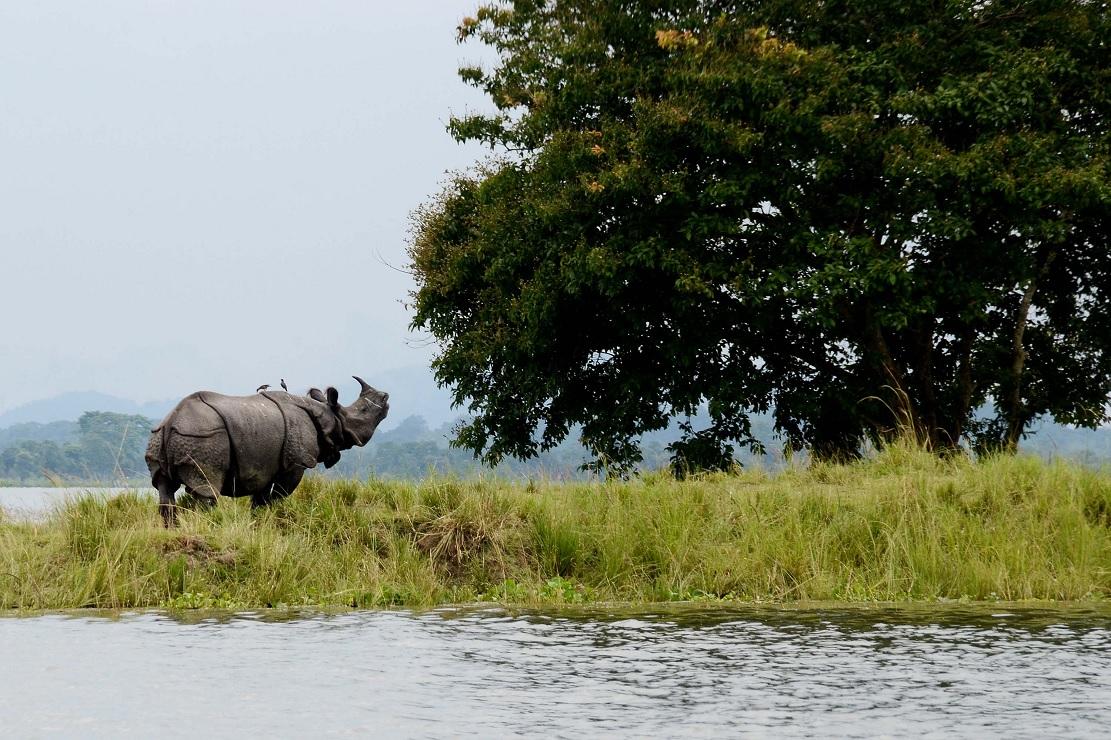Kaziranga National Park and Tiger Reserve recorded highest foot fall and revenue collection this season. Post-lockdown rush of both national and native tourists led to the highest annual visitors at the Kaziranga National Park and Tiger Reserve, which helped the authorities collect record revenue of over Rs. 6 crores. Assam forest department on Wednesday in a statement said that Kaziranga reported footfall of 2.75 lakh tourists during 2021-22, against 1.88 lakh in 2017-18. Jatindra Sharma, director of Kaziranga National Park and Tiger Reserve told Assam Times that altogether 2,75,835 tourists visited the UNESCO World Heritage Site Park between October 2021 and May 2022, setting an all-time record revenue collection of Rs.6,39,23,389. Altogether 2,74,116 domestic and 1,719 foreign tourists visited the park.
"Peaceful atmosphere of Assam is one major reason for tourist inflow. Post covid break too wooed most domestic tourists. The animal sighting stories, photos was all over social media. Apart from rhinoceros, the visitors had glimpses of tigers. The increased rhino and deer populations also made the park more alluring. Visitors thronged the park even during the lean period of April-May. The visit of President Ram Nath Kovind, Lok Sabha Om Birla, the members of a high-level standing committee of the Parliament and the Ambassadors of various nations to the park boosted its image and attracted visitors. Social media posts by the above dignitaries and Bollywood stars like Akshay Kumar who extended support to KNP attracted national and international tourists. I am sure we will do better next season." added Sharma while talking to Assam Times. In 2020-2021 the park received 1,67,644 tourists with total revenue garnered being Rs.3,60,00,611. In 2019-2020, a total of 1,42,859 tourists visited the park, generating revenue of Rs.4,20,63,541. The tourist flow to the park was affected during the period 2019-2020 and 2020-2021 due to the Covid-19 pandemic. In 2018-2019, the inflow of tourists was partially affected due to Covid," Sharma said. The latest rhino census in Kaziranga found 2,613 one-horned rhinos. Royal Bengal tigers, swamp deer, wild buffalo, large numbers of birds and other animals are other attractions for tourists in the park. Kaziranga National Park & Tiger Reserve was recently declared closed and will remain shut for tourists till the flood is over. Normally it remains open between October and May.
Samiya Bokhim, a resident of Sadiya in Upper Assam's Tunsukia district who witnessed the construction of 9.15kms Bhupen Hazarika bridge over Brahmaputra told Assam Times over the phone: 'Construction of Dholla Sadiya bridge and the Bhupen Hazarika Setu over Brahmaputra have not only saved human lives but also made the place more alluring for visitors. It has also reduced travel time and Sadiya developed faster than ever. Trade and livelihood mean too much increase which usually was very frightening while the water level increased during flood season. Similar construction of elevated corridors across Kaziranga will surely save the lives of animals and make the place more attractive for visitors.' Samiya recently visited Kaziranga with her family but couldn't enjoy it as desired due to flash floods and hoped that after the elevated corridor project, live animals are saved from death traps, forest guards and poachers conflicts reduces. The good news for Kaziranga is that the Ministry of Road Transport and Highway (MoRTH) Government of India sanctioned the proposed elevated green corridor across the national park after President Ram Nath Kovind discussed the matter with minister Nitin Gadkari after his visit. This was stated by the Chief Minister Dr. Himanta Biswa Sarma during the opening session of the 61st Bodo Sahitya Sabha at Tamulpur in BTR where President Kovind addressed the session as the Chief Guest with CMs of Assam Meghalaya and Sikkim on 4th May 2022. Sarma had said that Union Minister Gadkari informed him over the telephone to appraise the people of Assam and the President as advised by him and proposed by the Government of Assam, MoRTH Government of India has accorded approval for the construction of 22kms elevated green corridor in the first phase out of the proposed 35kms.
Wildlife-vehicle collisions with the KNP have always been a matter of concern. Vehicle hits increase during the rainy season when the park gets inundated and animals are often seen rushing to Karbianglong hills. Many wild animals, especially deer, are mowed down by vehicles plying on the highway. The elevated corridor is expected to offer free passage to wild animals and protect them from getting hit by vehicles. It is an ambitious and much-talked-about project proposed by Assam Government. As per the Forest Department officials, the 35-km elevated corridors would be divided into three parts – Rangulu to Deopani; Harmoti to Hatikhuli; and Panbari to Borjuri. The corridor will also have two tunnels. Regarding the elevated corridor, the State PWD has also taken into consideration the opinions of the people living in and around KNP.





Add new comment